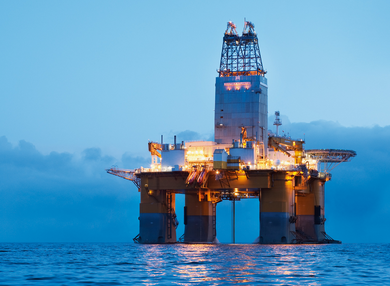Kuwait’s Plan to Boost Fossil Fuel Production
Kuwait’s oil minister recently unveiled a bold strategy aimed at enhancing the country’s fossil fuel production capabilities. This strategy also involves preparations for the Durra gas field, which is jointly shared with Saudi Arabia, amidst a dispute with Iran over ownership claims.
Boosting Oil Production to 4 Million Barrels a Day by 2035
The primary objective of Kuwait Petroleum Corporation (KPC) is to raise its overall oil production capacity to a staggering 4 million barrels per day (bpd) by the year 2035. Currently, Kuwait’s production capacity stands at approximately 2.9 million bpd and is projected to reach 3.2 million bpd by 2025 or 2026.
Subsidiary Kuwait Oil Company’s Role
KPC’s subsidiary, Kuwait Oil Company (KOC), plays a pivotal role in this endeavor. KOC aims to increase Kuwait’s oil production capacity to 3.65 million bpd by 2035, which is expected to generate around $11 billion in additional revenue for the state over the next five years.
Focusing on Gas Production
In addition to boosting oil production, Kuwait is also looking to expand its gas production capabilities. KOC, responsible for about 90% of Kuwait’s oil output, has plans to achieve a gas production capacity of 1.5 trillion cubic feet per day by the year 2040.
Abundant Oil Reserves
Kuwait boasts significant oil reserves estimated at around 100 billion barrels, indicating the nation’s considerable potential for continued oil production.
Financing the Strategy
KPC has earmarked a substantial budget of $410 billion, to be invested through 2040 to implement this comprehensive strategy. The funding will be sourced from a combination of KPC’s cash flow, debt, and partnerships with other companies.
Commitment to Environmental Responsibility
The state firm is committed to achieving net-zero carbon emissions by 2050. A portion of the $410 billion investment will be directed toward realizing the group’s energy transition goals.
Durra Gas Field Development
The Durra gas field, situated offshore, holds immense significance in Kuwait’s energy plans. While Iran has claimed a stake in the field, a Kuwaiti-Saudi Arabian agreement signed last year for its development has caused controversy. Kuwait asserts that it and Saudi Arabia have “exclusive rights” in Durra and has called on Iran to validate its claim by demarcating its maritime borders first.
Collaborative Efforts with Iraq
Kuwait and Iraq are engaged in discussions about the production mechanism for the Ratqa and Abdali oilfields, which they jointly share. In 2019, the two countries agreed to appoint British energy advisory firm ERC Equipoise to prepare a study for the development of these joint border oilfields.
Increasing Refining Capacity
KPC also has plans to boost its refining capacity to 1.6 million bpd locally and 425,000 bpd abroad by 2025. This expansion aims to meet growing energy demands.
Upcoming Milestones
Kuwait Integrated Petroleum Industries Company (KIPIC) is set to operate its Al Zour refinery complex at its full 615,000 bpd capacity soon. Furthermore, Kuwait Petroleum International is on track for full commercial operation of Oman’s Duqum refinery by the end of 2023.
Month: Current Affairs - October, 2023
Category: International / World Current Affairs


